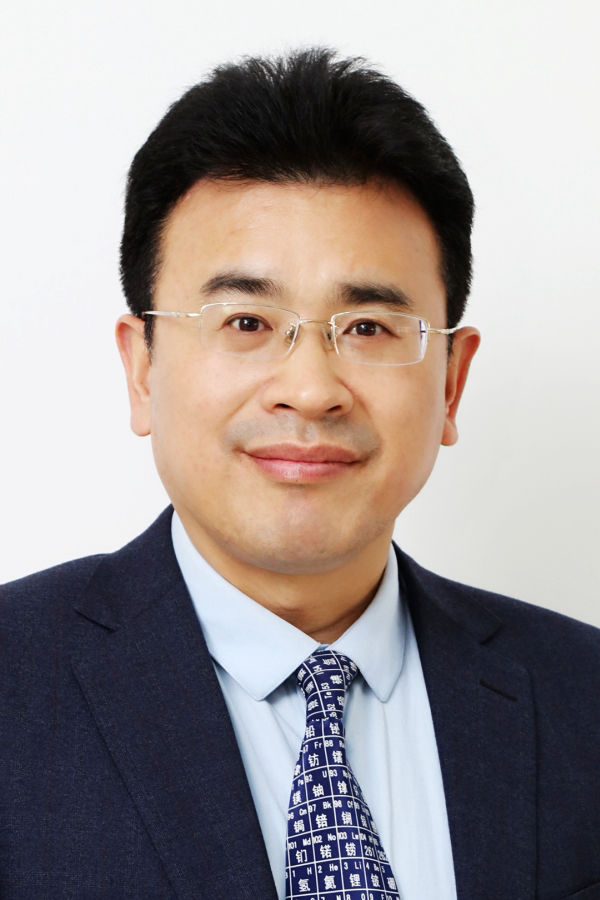Keynote Speaker
Biography
Prof Jun CHEN was elected the academician of the Chinese Academy of Sciences in 2017. He join the Communist Party of China in December 1988. Chen studied in the chemistry department of Nankai University during 1985 to 1992 and was awarded the bachelor's degree and master's degree successively. He stayed for work in Nankai University in 1992. From 1996 to 1999, he studied in the materials department of Wollongong University (Australia) with a doctorate degree. From 1999 to 2002, he was a research fellow in Japanese New Energy and Industrial Technology Development Organization (NEDO) at the Osaka Institute of Industrial Technology, Japanese Industrial Technology Institute. Jun Chen served as a professor of Nankai University and doctoral supervisor from 2002. He is currently the vice President of Nankai University, the director of Key Laboratory of Advanced Energy Materials Chemistry (Ministry of Education) and the Chairman of the Chinese Society of Electrochemistry.
He is mainly engaged in the research of inorganic solid chemistry. He has made an important and innovative contribution to the synthesis of inorganic solid functional materials, the preparation of solid electrode and the development of new battery electrode materials. So far, he has published 400 papers, been authorized 30 invention patents and written 16 books (chapters). He was awarded The National Science Fund for Distinguished Young Scholars in 2003, distinguished professor of Chang Jiang Scholars Program (Ministry of Education) in 2005, Chief expert of 973 Program in 2010, the second prize of national award for natural sciences in 2011, Chinese Electrochemical Contribution Award in 2013 and Leader in Science and Technology Innovation Talents in 2014, fellow of the Royal Society of Chemistry in 2014, the First Outstanding Talents of Tianjin in 2016. He is the deputy editor of the Inorganic Chemistry Frontiers and Applied Chemistry. He is the international editorial advisory board member of Solid State Sciences, ACS Sustainable Chem. Eng., ACS Energy Lett., J. Energy Chem., Nano Research Science China: Materials, Acta Chimica Sinica, Acta Physico-Chimica Sinica, Electrochemistry, Power Supply Technology and other journals.
Organic Carbonyl Electrode Materials for Li/Na Batteries
Jun Chen
Abstract
Lithium-ion batteries (LIBs) have dominated the market of portable electronics and electric vehicles due to their high energy density and long-term cyclability, and are moving forward to scale energy storage applications such as regulating the output of electricity generated by sustainable energy. Nevertheless, the current electrochemistry of LIBs based on Li-ion interaction/de-interaction between graphite anode and oxide cathode is suffering from intrinsic limitations of energy density, scarce natural resource (Li, Co, Ni etc.), and high energy consumption/CO2 emission involved in the production of electrodes. Organic redox compounds, especially conjugated carbonyl compounds that have been studied since 1969, are reviving in the recent years due to the advantages of high capacity, abundant resources, and structural designability. Moreover, the electrochemical redox mechanism of organic carbonyl electrode materials mainly based on charge compensation enables the battery applications with versatile charge carriers (Li+ , Na+, H+ etc.). The key challenges of organic carbonyl electrode materials are their high solubility in electrolyte during cycles and poor electronic conductivity, leading to fast capacity decay and inferior rate performance, respectively. This report focuses on the redox chemistry, structure-performance relationship, and applications of organic carbonyl electrode materials for Li and Na batteries. We developed several strategies from the aspects of molecular design (electrode level) and electrolyte optimization (electrolyte level) to solve the issues of organic carbonyl electrodes and construct high-performance Li/Na batteries. With elaborate design, organic carbonyl electrode materials have demonstrated promising interest for large-scale electrochemical energy storage in the foreseeable future.

Figure 1. Proposed strategies toward improving the electrochemical performance of organic carbonyl electrodes for Li/Na batteries.
References and selected publications
[1] D. L. Williams, J. J. Byrne, J. S. Driscoll. J. Electrochem. Soc. 1969, 116, 2–4.
[2] H. Chen, M. Armand, G. Demailly, F. Dolhem, P. Poizot, J.-M. Tarascon. ChemSusChem 2008, 1, 348–355.
[3] Y. Liang, Z. Tao, J. Chen. Adv. Energy Mater. 2012, 2, 742–769.
[4] Y. Liang, P. Zhang, J. Chen. Chem. Sci. 2013, 4, 1330–1337.
[5] Y. Liang, P. Zhang, S. Yang, Z. Tao, J. Chen. Adv. Energy Mater. 2013, 3, 600–605.
[6] W. Huang, Z. Zhu, L. Wang, S. Wang, H. Li, Z. Tao, J. Shi, L. Guan, J. Chen. Angew. Chem. Int. Ed. 2013, 52, 9162–9166.
[7] Z. Zhu, M. Hong, D. Guo, J. Shi, Z. Tao, J. Chen. J. Am. Chem. Soc. 2014, 136, 16461−16464.
[8] S. Wang, L. Wang, Z. Zhu, Z. Hu, Q. Zhao, J. Chen. Angew. Chem. Int. Ed. 2014, 53, 5892–5896.
[9] Z. Luo, L. Liu, Q. Zhao, F. Li, J. Chen. Angew. Chem. Int. Ed. 2017, 56, 12561–12565.
[10] R. Shi, L. Liu, Y. Lu, C. Wang, Y. Li, L. Li, Z. Yan, J. Chen. Nature Commun. 2020, 11, 178.
[11] Y. Lu, J. Chen. Nature Rev. Chem. 2020, 4, 127–142.
[12] Y. Lu, Y. Cai, Q. Zhang, J. Chen. Adv. Mater. 2022, 34, 2104150.

